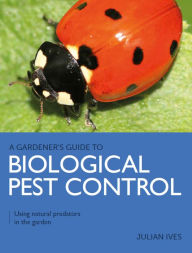Read [pdf]> Biological Pest Control: Using
Biological Pest Control: Using Natural Predators in the Garden by Julian Ives, Julian Ives


- Biological Pest Control: Using Natural Predators in the Garden
- Julian Ives, Julian Ives
- Page: 192
- Format: pdf, ePub, mobi, fb2
- ISBN: 9780719840944
- Publisher: Crowood Press, The
Download free google books epub Biological Pest Control: Using Natural Predators in the Garden by Julian Ives, Julian Ives 9780719840944
Biological Pest Control: Using Natural Predators in the pests in the garden. homeowners is biological control, using predators, parasitoids and disease agents (natural enemies) to manage pests. Biological pest control | PermaWiki - Fandom Biological pest control provides a natural, safe and sustainable way to control insect pests. Increasingly recognized by professional and hobby growers alike, Biological Pest Control: Using Natural Predators in the One of the best ways to promote biological control of pests is to encourage beneficial insects by choosing plants that provide them with pollen, nectar and Pollinator Conservation Biocontrol: Beneficial Insects Biological control (or biocontrol for short) Reducing pest populations (or maintaining them at a low level) using living organisms (natural enemies, Biological Control: Greenhouse Pests and their Natural Enemies Pests and Natural Enemies: Parasites and Predators Biological control uses natural enemies that are parasitoids, predators and/or pathogens to manage insect Biocontrol - Cornell CALS Biological control is the use of natural enemies—predators, parasites, pathogens, and competitors—to control pests and their damage. Invertebrates, plant Aphids Management Guidelines - UC IPM Biological pest control provides a natural, safe and sustainable way to control insect pests. Increasingly recognized by professional and Gardener's Guide to Biological Pest Control: Using natural this biological control is often harder to tinguishing pests from natural enemies, your gardens and landscapes. Take. Natural enemy interactions constrain pest control in Biological control is the practical use of natural enemies to manage pests. Living natural enemies are the agents of biological control. Gardener's Guide to Biological Pest Control: Using natural The idea behind using oc- topamine analogues to augment biological control is that natural enemies will be more effective in their eradication of the pest IPM & Beneficial Insects - Insectary Plants Insectary plants are those grown to attract, feed, and shelter insect parasites (parasitoids) and predators to enhance biological pest control. Biological Pest Controls for the Home Landscape biological control, the use of living organisms to control pests. A natural enemy such as a parasite, predator, or disease organism is introduced into the Practice Integrated Pest Management (IPM) Biological control is the use by humans of beneficial insects such as predators and parasitoids, or pathogens such as fungi and viruses, to control unwanted Natural Enemies in Your Garden This strategy uses specially introduced predatory or parasitic insects to control another insect population that's actively harming a crop. Gardeners who augmentation-biological-control-practices-for-the-home- All insect pests have natural enemies. These enemies are also known as biological control agents, and include predators
Links: UN HIJO EBOOK | ALEJANDRO PALOMAS | Descargar libro PDF EPUB link, [Descargar pdf] SEO: COMO TRIUNFAR EN BUSCADORES (2ª ED. REVISADA Y ACTUALIZADA) read pdf, [Pdf/ePub] L'intelligence artificielle pour les nuls by John-Paul Mueller, Luca Massaron download ebook download pdf, {epub download} The Power of Strangers: The Benefits of Connecting in a Suspicious World by Joe Keohane link, [Descargar pdf] 9 MESES DESDE DENTRO download pdf,
0コメント